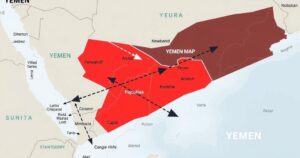Israeli Military Implements Roadblocks in Southern Lebanon, Delays Withdrawal

On January 25, 2025, the Israeli military set up roadblocks in southern Lebanon, indicating it would not withdraw as per a ceasefire deal reached with Hezbollah. The delays in troop withdrawal are attributed to unmet obligations by both sides, with significant destruction noted in towns like Mays al-Jabal. The humanitarian situation remains critical for displaced residents amid ongoing military operations.
On January 25, 2025, the Israeli military established roadblocks across southern Lebanon, particularly affecting border towns and strategic valleys. This action came just a day prior to a deadline stipulated in a ceasefire agreement intended to conclude hostilities with the Hezbollah militant group. Israel indicated that it would not fulfill its withdrawal commitments from the region by the agreed date, citing unmet obligations from both Hezbollah and the Lebanese army as factors.
The ceasefire, initiated in late November, had outlined provisions for the withdrawal of military forces from southern Lebanon, alongside the deployment of the Lebanese army and United Nations peacekeepers. While the Israeli military claimed progress was being made, they noted delays in certain sectors. Conversely, the Lebanese military alleged that Israel was impeding their deployment into areas previously held by Israeli troops.
The presence of Israeli troops is still predominantly felt in the southeastern sector, while the Lebanese army has progressively moved into the western areas. UNIFIL (United Nations Interim Force in Lebanon) personnel observed an escalation in Israeli military activity, with tanks establishing roadblocks that hinder repatriation efforts for displaced Lebanese citizens.
The landscape in Mays al-Jabal bears stark evidence of conflict, with most buildings reduced to rubble due to prior Israeli military strikes. Very few structures remained intact, and displaced residents have yet to return. The scene is echoed in surrounding towns, like Blida and Aitaroun, which have similarly succumbed to extensive destruction.
UNIFIL peacekeepers faced challenges negotiating passage through Israeli roadblocks during their patrols, leading to some crews being stranded. Reports suggest ongoing activity from the Israel Defense Forces in the area. Additionally, the presence of Hezbollah weapon caches was noted during UNIFIL patrols.
Israel asserted that it is targeting remaining Hezbollah infrastructure and has been engaged in demolitions of properties associated with the group. Lebanese officials condemned the destruction of civilian areas and infrastructure, raising concerns over the implications for the return of displaced residents.
In a discussion with French President Emmanuel Macron, Lebanese President Joseph Aoun highlighted disruptions caused by the bulldozing of lands, which he argued would obstruct the repatriation of displaced individuals. Approximately 112,000 Lebanese continue to remain displaced, with substantial areas of southern and eastern Lebanon devastated by conflict.
This article provides an overview of the ongoing conflict in southern Lebanon between Israeli military forces and Hezbollah, a militant group. The context of their engagement is linked to a ceasefire agreement that intended to allow a withdrawal of troops and stabilize the region. The Israeli military’s recent actions, including the establishment of roadblocks, are seen in relation to the broader implications for peace and repatriation of displaced populations. The humanitarian impact of these military operations is significant, resulting in widespread destruction and civilian displacement.
In conclusion, the Israeli military’s establishment of roadblocks and decision to defer its withdrawal from southern Lebanon highlight the complexities surrounding the ceasefire agreement with Hezbollah. Disputes regarding troop deployments and the humanitarian crisis resulting from destruction in the region underscore the challenges faced by both military and civilian actors. The ongoing situation raises concerns for displaced populations and the potential for future conflict.
Original Source: apnews.com








